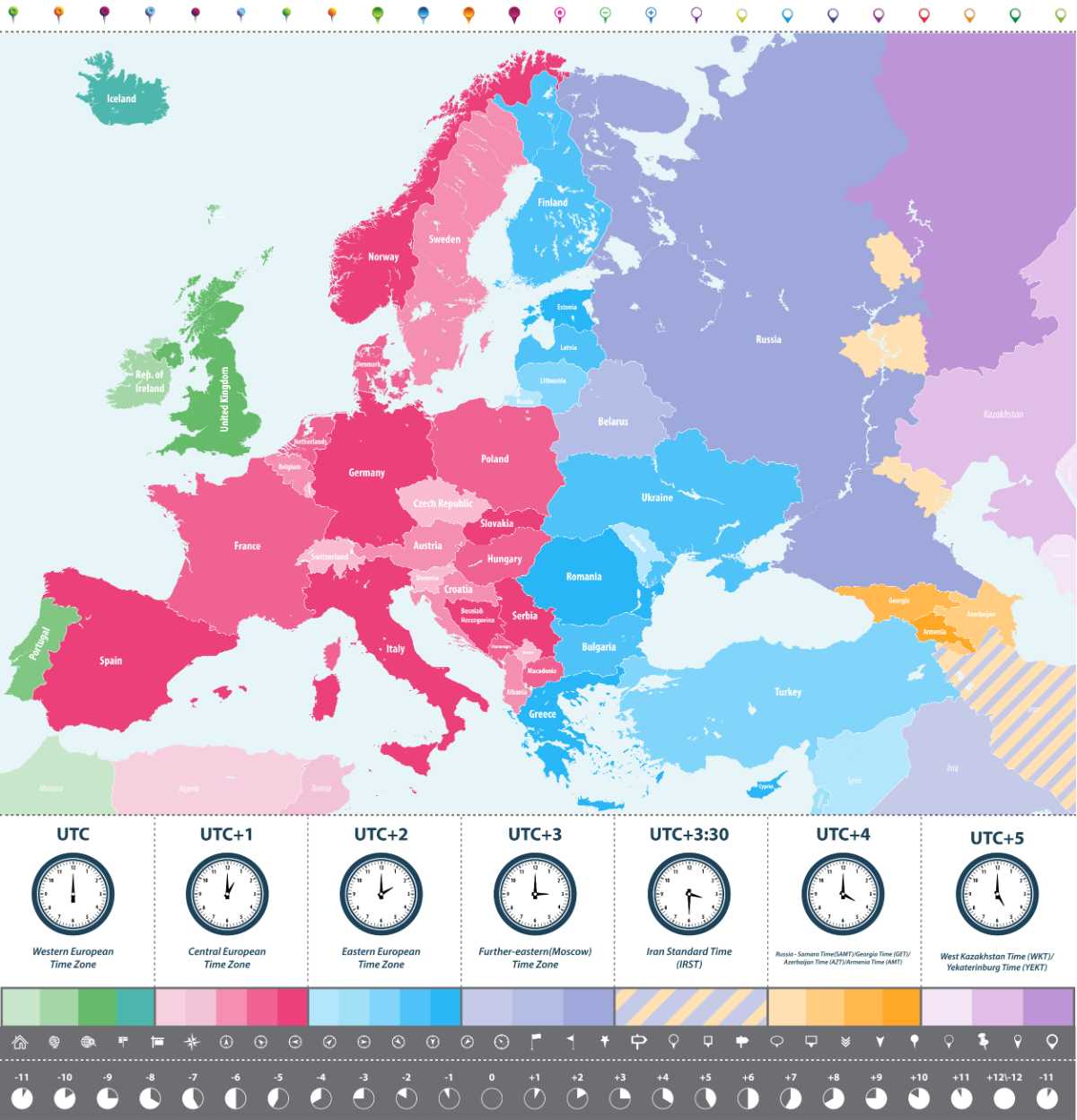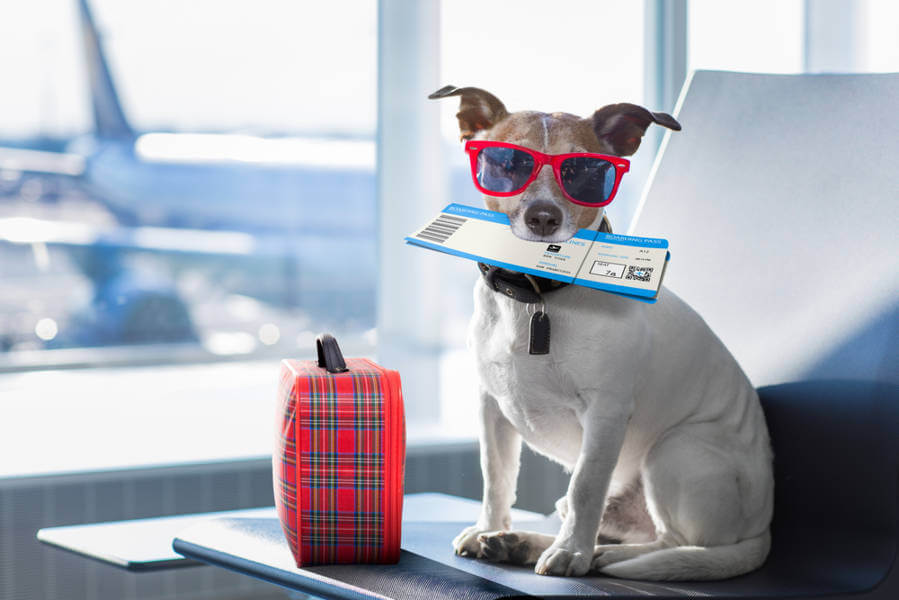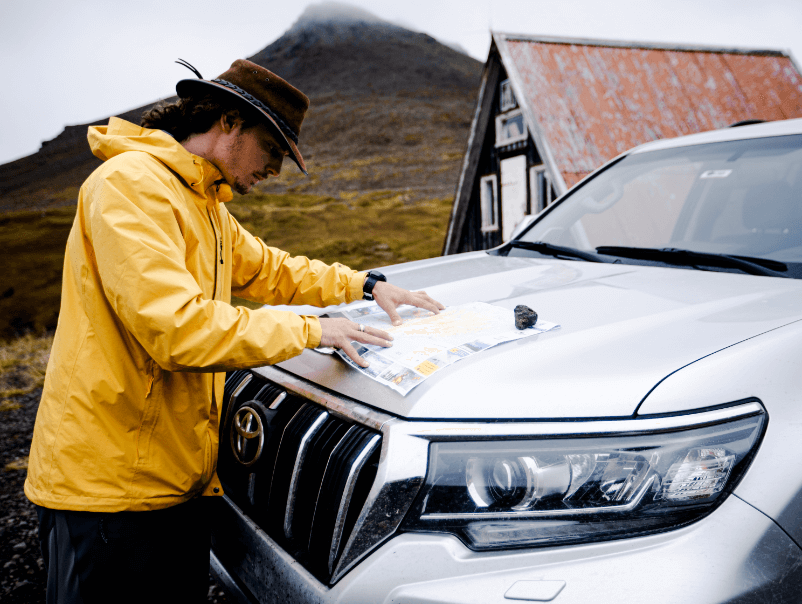Have you ever dreamed of exploring Iceland on your own terms, with your car, camper, or motorcycle by your side? Taking the ferry to Iceland offers a rare chance to combine breathtaking sea views with the freedom of bringing your vehicle along for the journey.
But let's be real, figuring out the logistics can feel a bit overwhelming.
How do you bring your wheels, pick the right route, and know what to expect onboard? Don't worry, you're not alone. Here's the good news, we've got all the tips, tricks, and insider info to make your trip seamless. So, without further ado, let's get you up to speed.
Why Take a Ferry to Iceland?
Traveling to Iceland by ferry isn't just a way to get there; it's an experience in itself! The Iceland ferry offers unique advantages that make it a fantastic choice for travelers looking for flexibility and adventure. Here's why it stands out:
- Bring Your Own Vehicle: The ferry to Iceland is the only option for transporting your car, camper, motorcycle, or even bicycle directly to the island. With space for up to 800 vehicles, it's perfect for road trippers, families, and groups with gear to carry.
- Freedom to Explore: Having your own vehicle means you can discover Iceland on your terms, including those hidden gems far off the beaten path. No waiting on tour buses or worrying about car rentals!
- Scenic Journey: Sail through the stunning North Atlantic Ocean, with views of marine wildlife, rugged coastlines, and dramatic fjords. Plus, you'll get the bonus of a stopover in the Faroe Islands to explore this breathtaking archipelago.
- Cost-Effective for Groups: If you're traveling with family or friends, the ferry can be a more economical option compared to individual flights and car rentals.
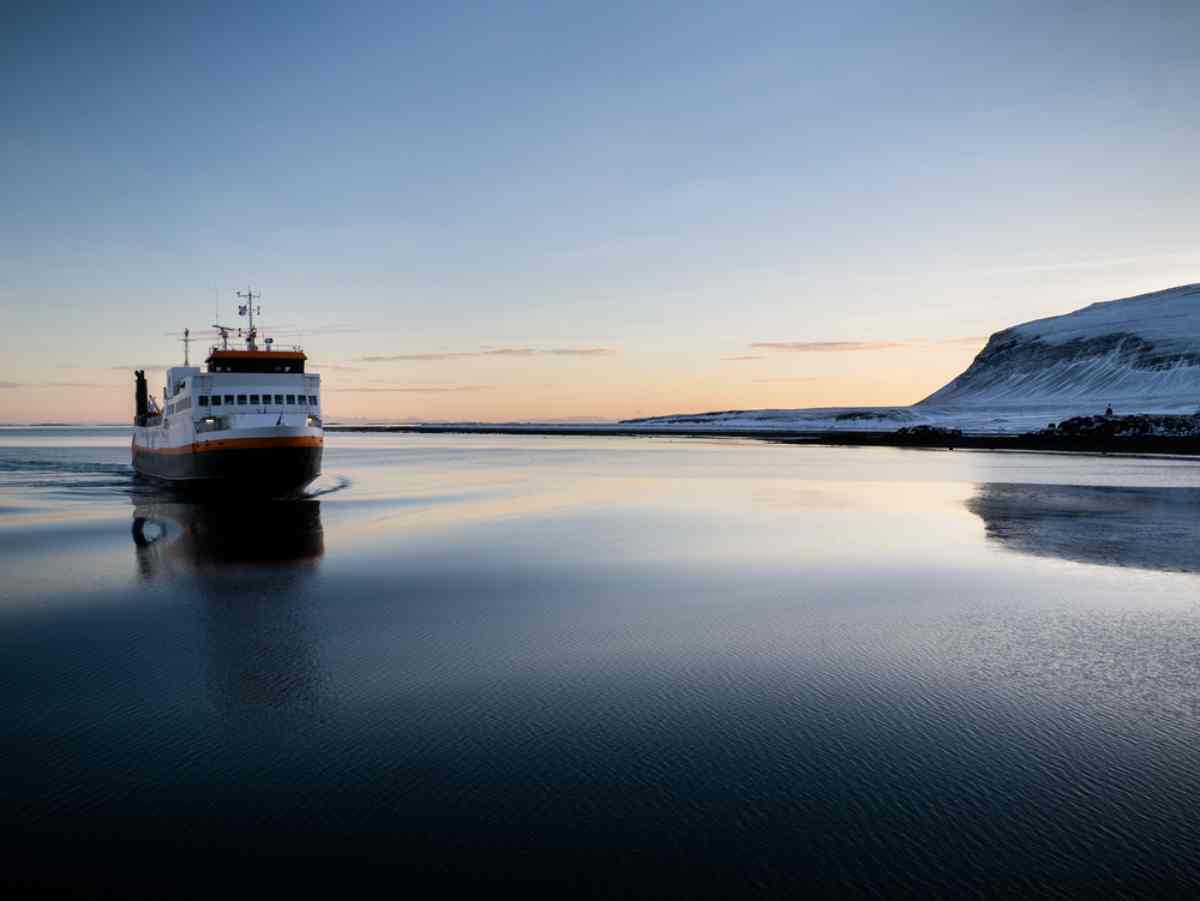
The Main Route from Denmark to Iceland via the Smyril Line
The Smyril Line offers one of the most scenic and unique Iceland ferry routes, taking you from Hirtshals in Denmark all the way to Seyðisfjörður in Iceland. Along the way, you'll get the chance to stop in the breathtaking Faroe Islands, turning your trip into more than just a journey. This route is run by the M/S Norröna, a ferry known for its comfort and incredible views.
Main Route Details
Here's what you need to know about the route of the ferry to Iceland:
- Departure Point: The journey begins in Hirtshals, a charming coastal town in Denmark.
- Arrival Point: The ferry docks in Seyðisfjörður, a picturesque port town in Iceland's East Fjords.
- Duration: The trip takes approximately 66 hours, including a scenic stopover in the beautiful Faroe Islands.
- Frequency: Operates weekly year-round. From March to October, there are usually two sailings per week, offering more flexibility during the summer months.
Schedule Overview
Here's a quick look at the schedule for Iceland ferries so you can plan your trip with ease:
- Winter Schedule: From November to March, the ferry mainly focuses on freight services, and passenger sailings depend on weather conditions, so flexibility is key.
- Summer Schedule: During the summer months (June to August), there are two sailings per week. One of these includes a 6-hour stopover in Tórshavn, the capital of the Faroe Islands.
Typical Itinerary for Summer Sailing
- Depart from Hirtshals, Denmark, on Sunday at 15:00.
- Arrive in Tórshavn, Faroe Islands, on Tuesday morning.
- Depart from Tórshavn for Seyðisfjörður, Iceland, on Tuesday afternoon.
- Arrive in Seyðisfjörður on Wednesday morning.
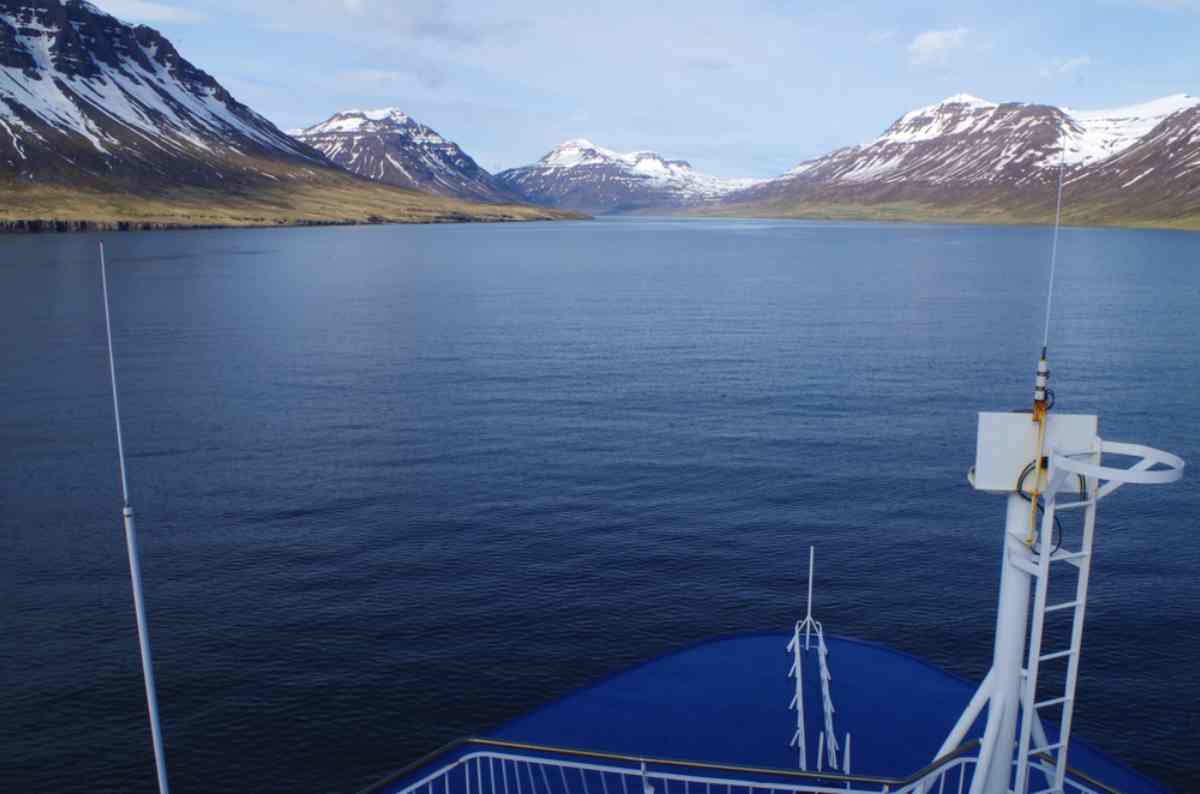
Faroe Islands Stopover
During your ferry journey, you'll get the unique opportunity to explore the Faroe Islands, a remote and breathtaking archipelago located between Iceland and Norway. Just in case you are wondering what to do during the 6-hour stopover, here are a few ideas:
- Explore Tórshavn: Wander through one of the world's smallest capitals, known for its colorful houses, quaint streets, and vibrant harbor. Don't miss Tinganes, the historic old town with charming turf-roofed buildings.
- Visit Kirkjubøur: Take a short trip to this historic village, home to the medieval Magnus Cathedral and a 900-year-old farmhouse that's still in use today.
- Hike to Sørvágsvatn Lake: If time allows, head to this optical illusion lake that seems to float above the ocean. It's a short drive and a stunning sight.
- Sample Local Cuisine: Stop by a café or restaurant to enjoy Faroese specialties like fermented lamb, fresh seafood, or a warm bowl of fish soup.
- Capture Scenic Views: Spend time soaking in the dramatic landscapes, from steep cliffs and fjords to rolling green hills. Bring your camera because every angle is picture-perfect.
The Iceland Ferry Routes Map
What to Expect on the MS Norröna Ferry
Taking the boat to Iceland on the M/S Norröna feels more like a mini-cruise than just a ferry ride. With top-notch amenities and plenty to do onboard, your three-day journey from Denmark to Iceland will be anything but boring. Here's what you can look forward to:
Dining Options
- Gourmet Restaurant: Enjoy Scandinavian specialties in a fine dining atmosphere.
- Buffet Restaurant (Skansagarður): A wide range of dishes for breakfast and dinner, perfect for all tastes and diets.
- Cafeterias: Try Nóatún for casual bites like pizza and sandwiches, or visit Laterna Magica on the top deck for snacks with ocean views.
Entertainment Areas
- Cinema: Watch the latest movies in a cozy onboard theater.
- Swimming Pool and Hot Tubs: Relax with a dip in the pool or rent a hot tub for added luxury.
- Fitness Center: Keep up your workout routine with a variety of exercise machines.
Shopping
- Tax-Free Shop: Stock up on perfumes, jewelry, and beverages at duty-free prices.
- Souvenir Shop: Grab toys, crafts, and keepsakes to remember your trip.
Family-Friendly Facilities
- Kids' Play Areas: Keep younger travelers entertained with designated play spaces.
- Teen Room and Soccer Field: Perfect for teenagers to hang out and have fun.
Comfortable Cabins
The M/S Norröna offers everything from cozy family cabins to luxurious suites, all equipped with en-suite bathrooms and air conditioning for a comfortable stay.
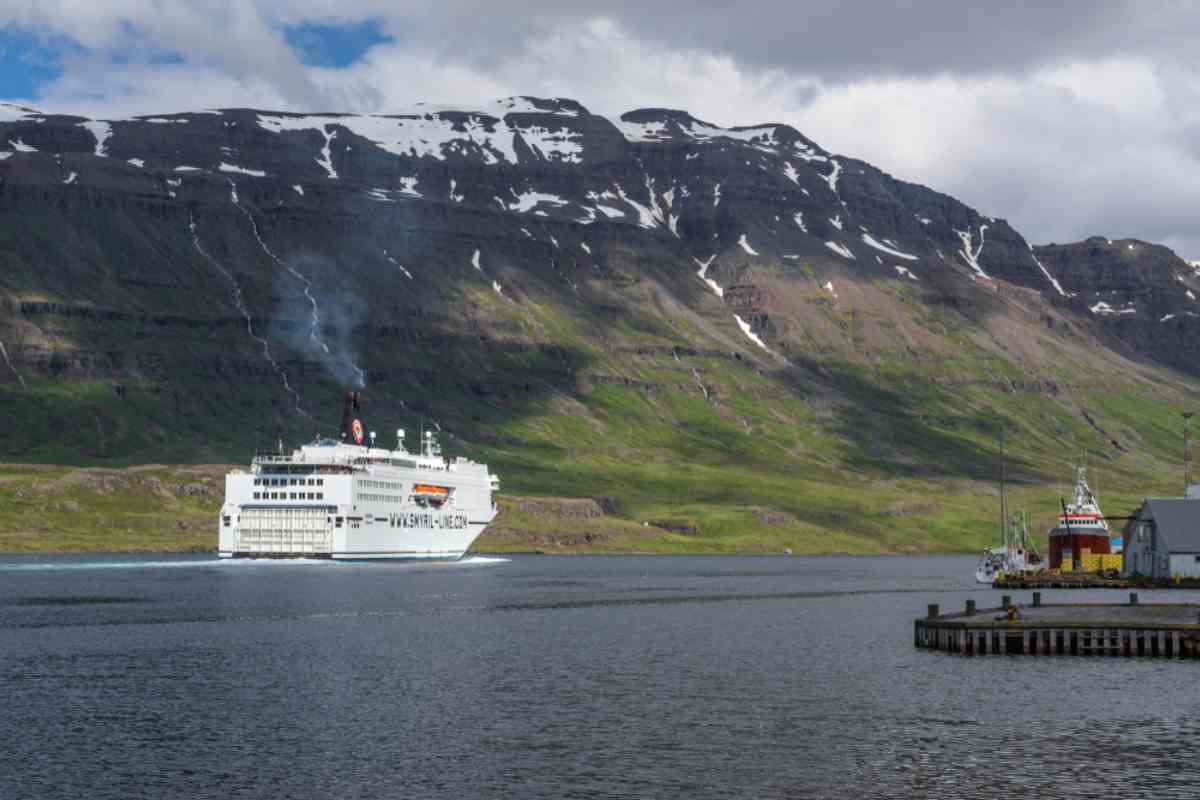
How to Book Your Ferry to Iceland
Booking your ferry to Iceland is easier than you might think, and a little planning can help you snag the best deals. Here's what you need to do:
- Visit Smyril Line's Website: Start by checking out Smyril Line's official site. You'll find all the latest schedules, prices, and booking options there. It's super straightforward to navigate.
- Pick Your Travel Dates: The ferry runs year-round, but summer (March to October) is when things get busier, with two sailings a week. That means more options for your schedule, so it's a great time to plan your trip.
- Choose Your Cabin and Vehicle Options: Smyril Line has everything from cozy standard cabins to luxurious suites. Bringing your car, camper, or motorcycle? Make sure to select that option while booking.
Booking Tips and Pricing
Here's what you need to know about pricing and booking a ferry to Iceland:
- Cost of the Crossing: Prices vary based on several factors. During high season, a two-person return trip can range from $2,110 to $3,880. Costs depend on the popularity of the sailing and whether you're bringing a car or camper.
- Dynamic Pricing: Smyril Line uses a dynamic pricing system, so the cost increases as the ferry fills up. Booking early is your best bet to lock in a lower rate and secure your spot.
- Book Early for Preferred Cabins: Early bookings don't just save money; they also give you a better chance of snagging your preferred cabin type before they sell out.
- Additional Costs Onboard: Don't forget to budget for extras like food, drinks, and optional amenities such as Wi-Fi, cinema access, or hot tub rentals.
Ways to Save Money
- Consider a one-way ferry trip and fly back for a cheaper option.
- Book a shared cabin, which can accommodate up to six people, making it more affordable.
- Travel outside the high season and look for package deals or special offers to cut costs.
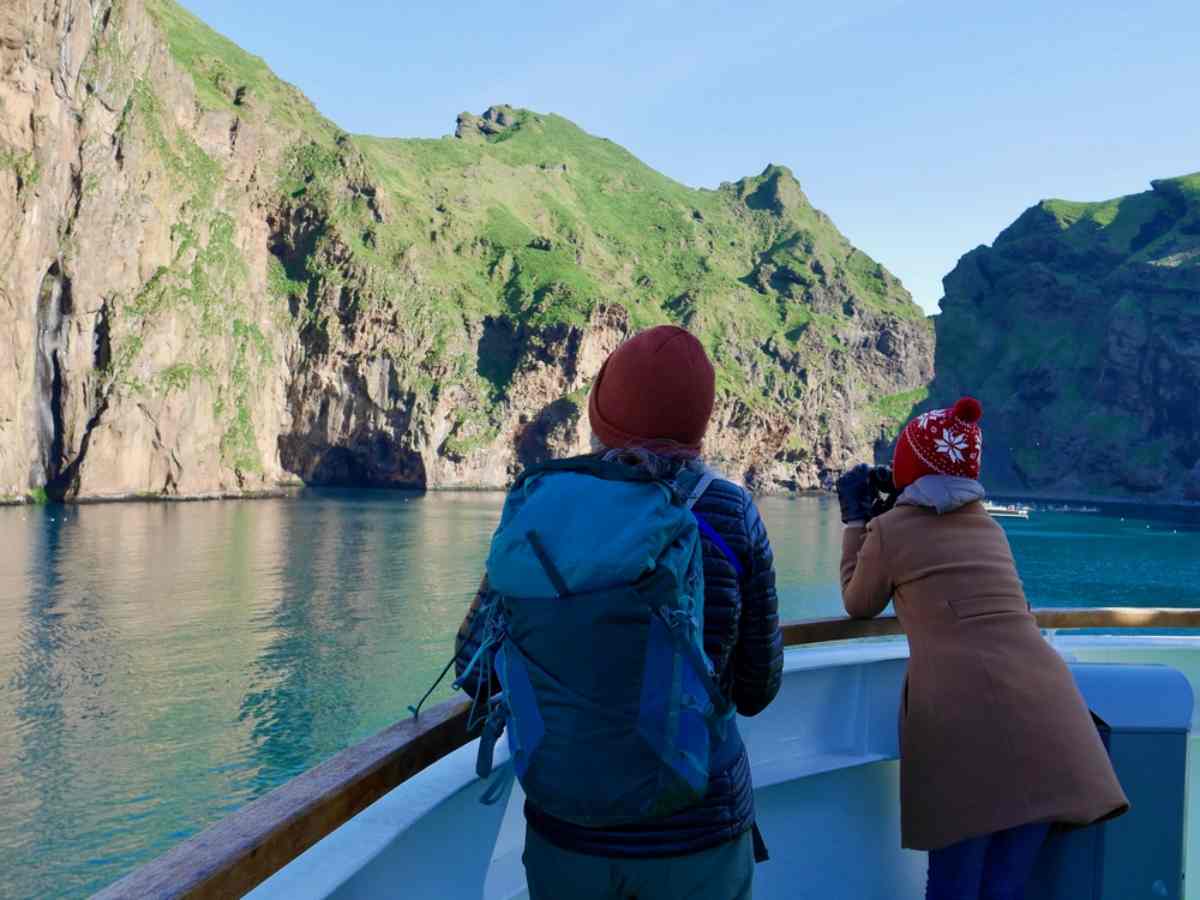
Ferry Travel with Vehicles
Bringing your car, motorcycle, or camper on the Iceland ferry is a straightforward process, but there are some steps to keep in mind to make sure everything goes smoothly. Here's a friendly breakdown:
Pre-Arrival Declaration
Before your trip, complete an online declaration form through Icelandic Customs (Skatturinn). This form ensures you're following local regulations. You'll get an email with the link and instructions about 30 days before your departure.
Temporary Import
Tourists can temporarily bring vehicles into Iceland for personal use for up to 12 months without paying import duties. This applies to cars, motorcycles, campers, and trailers.
What You'll Need
- Proof of vehicle ownership
- Completed online declaration form
- Insurance documents, including an International Motor Insurance Card (if you're coming from outside the EEA)
Vehicle Inspection
Customs officials may inspect your vehicle upon arrival. This step ensures compliance with Icelandic regulations, but it's usually a quick process.
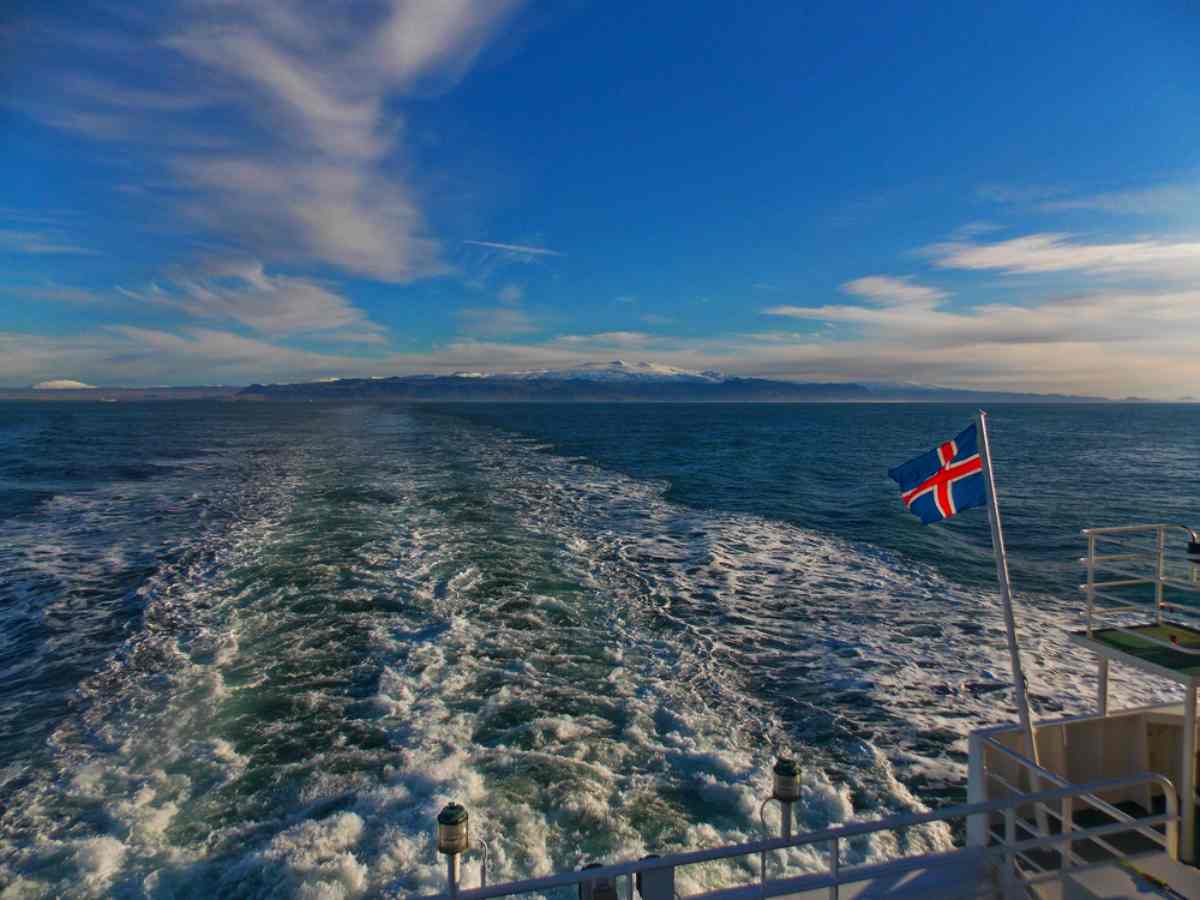
Important Notes for Tourists
- Duration: Temporary imports are valid for up to 12 months. If you plan to stay longer, you'll need to clear customs or export the vehicle.
- Regulations: Make sure your vehicle complies with Icelandic safety and environmental standards.
Practical Information for Travelers
Now, let's cover some essential practical information for your ferry trip to Iceland:
- Passports and Visas: U.S. citizens do not need a visa to visit Iceland, but a valid passport is required.
- Currency: The official currency in Iceland is the Icelandic Krona (ISK). Most establishments also accept credit cards, but it's always good to have some cash on hand for smaller purchases or emergencies.
- Travel Insurance: It's always a smart idea to purchase travel insurance to protect yourself and your belongings in case of any unforeseen events.
- Language: Icelandic is the official language, but English is widely spoken across the country.
- Electricity: Iceland uses Europlug type C/F electricity outlets with 220V voltage. Make sure to bring an adapter for your electronics if you are coming from a country with different outlets.
How to Get to Hirtshals, Denmark
Getting to the Hirtshals ferry terminal, where many ferries from Iceland dock, is quite simple. Here's how you can make your way there:
The terminal is at Containerkajen 4, DK-9850 Hirtshals, Denmark, located at the northern tip of the country. It's about a 30–35-minute walk from Hirtshals town center and is well signposted, so you won't have trouble finding it.
If you're driving:
- Follow the E39 highway towards Hjørring.
- Take the exit for Hirtshals and head toward the town center.
- Once you're in Hirtshals, look for signs pointing to the ferry terminal, specifically for Smyril Line.
- Drive to the end of Sigurd Espersens Vej, where the vehicle check-in area is located.
Parking options are limited near the terminal, but you can find designated spots or use nearby facilities like Hotel Skagas, which offers paid parking.
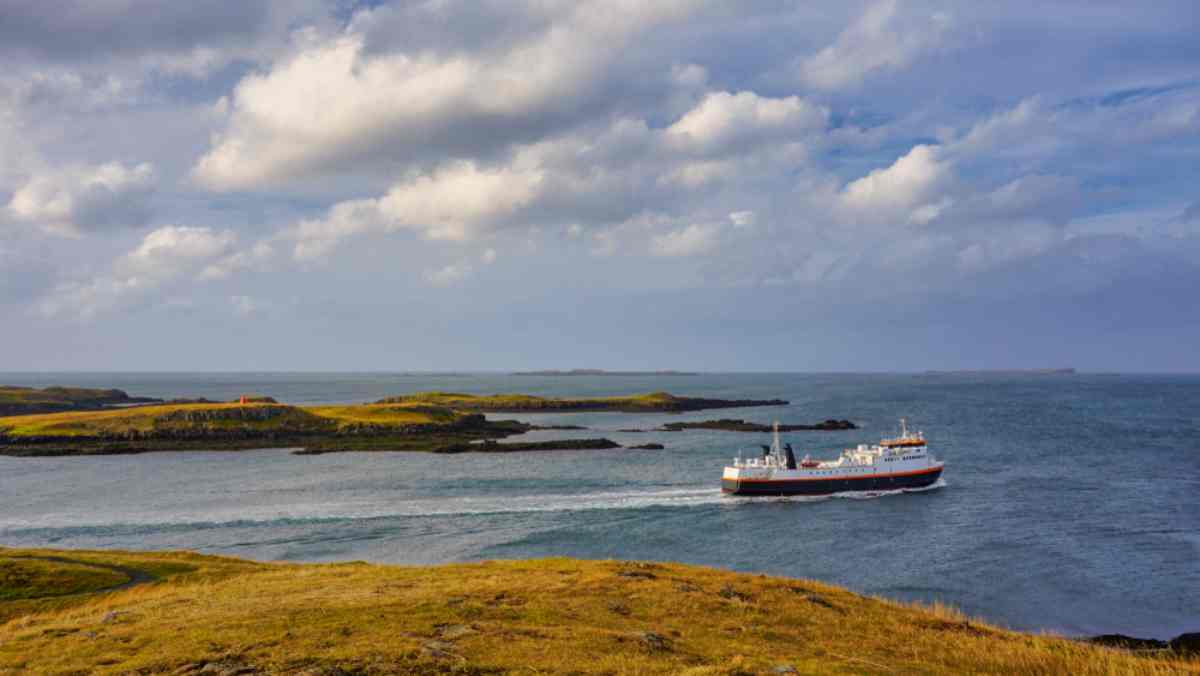
Best Time to Travel by Ferry to Iceland
The best time to catch ferries in Iceland is during the Icelandic summer. This is when sailings are more frequent, offering greater flexibility for travelers. The weather is also milder, making the North Atlantic crossing smoother and more enjoyable. If you're looking for a scenic and stress-free trip, summer is the perfect season to experience the beauty of Iceland by ferry.
Flying vs. Ferry: Which is Best for You?
Deciding between the ferry service and flying depends on your travel style and priorities.
- Travel Time: Flying is significantly faster, with flights taking about 3 hours from most European cities to Iceland, compared to the 3-day ferry journey. If time is tight, flying is the better choice.
- Bringing a Vehicle: Taking the ferry allows you to bring your car, camper, or motorcycle, giving you the freedom to explore Iceland's rugged landscapes at your own pace. Flying, on the other hand, means relying on car rentals, which can add to costs and limit flexibility.
- The Experience: A ferry trip feels more like an adventure. You'll sail through the North Atlantic, enjoy onboard amenities, and even stop at the Faroe Islands. Flying gets you there quickly but skips the immersive travel experience.
- Cost: Flights are often cheaper upfront, but the ferry can be more economical if you're traveling with a group or bringing a vehicle.
To Take the Ferry to Iceland or Not?
Choosing whether to take the ferry to Iceland or fly depends on your priorities. If you love the idea of bringing your own vehicle and enjoying a scenic sea journey, the ferry is an unforgettable experience. If flying suits you better, why not rent a campervan in Iceland instead of a car once you arrive?
It's a cost-effective way to combine transportation and accommodation while giving you the freedom to explore Iceland's stunning landscapes at your own pace. A campervan also offers a more authentic and unique way to experience the magic of our island. The choice is yours!


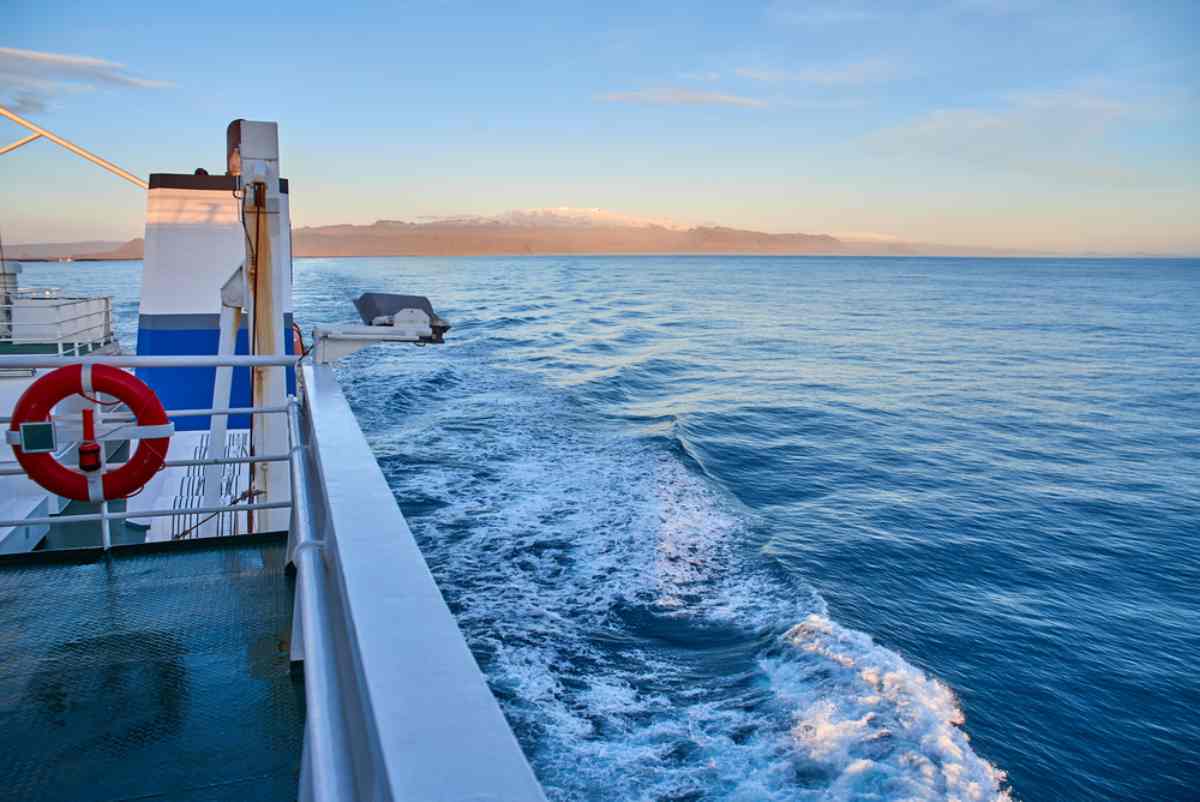
 By
By 
